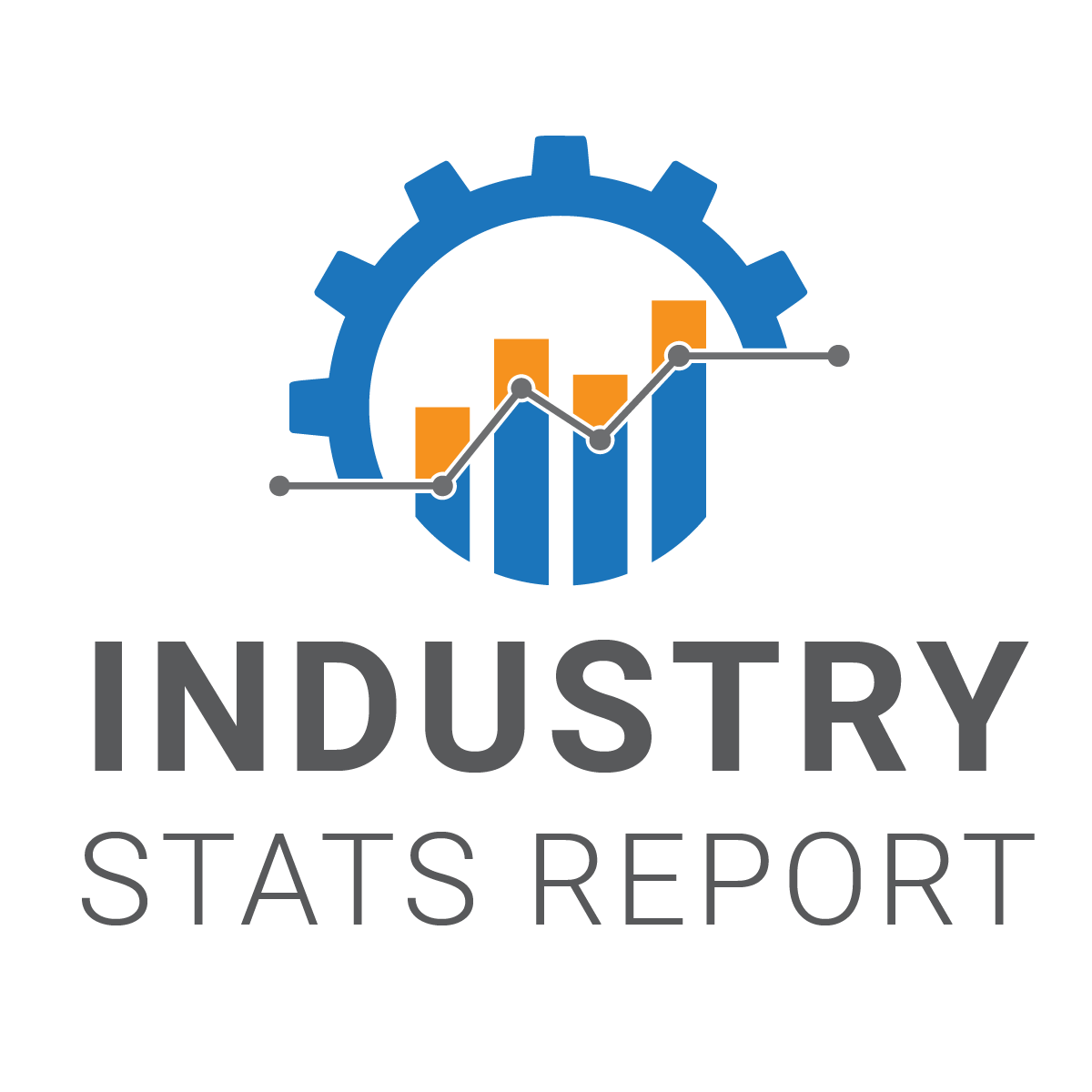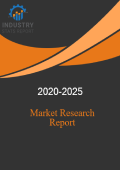Brandessence Market Research is working on a new report title“Global Peptide Drugs Market: Global Size, Trends, Competitive, Historical & Forecast Analysis, 2021-2027?. Rising prevalence of metabolic disorders such as Obesity, Hyperthyroidism, Hypothyroidism, Diabetes, etc. with increasing number of cancer patient and latest technological advancement in peptide therapiesare some of the key factors which boosttheGlobal Peptide Drugs Market.
Scope of Global Peptide Drugs Market Reports
A compound containing two or more amino acids connected in a chain, the carboxyl group(-COOH) of each acid being joined to the amino group (-RNH2) of the next by a bond of the type (-OC-NH-). Peptides are smaller than proteins, which are also chains of amino acids.Peptides are used in drug development programs to give superior pharmacological effects and improve patient’shealth. Peptides have high safety and efficacy due to which they are widely accepted in Doctors and patients for treatment of various disorders such as Diabetes, Central Nervous System (CNS), hormonal systems, cardiovascular diseases, oncology and other diseases &various types of cancers likeProstrate, Breast, Ovarian and Pancreatic Cancers. Peptides can be easily altered as compared to other drug categories making them highly lucrative for benefactors. Peptide drugs are versatile in nature due to which they can be used for treating various life threatening diseases.Due to versatility they could be used for several medical signs leading to higher market penetration. Also therapeutics effects, developed market give advantages related to awareness and comparatively easy marketing approval.
More than 7500 naturally occurring peptides have been identified and these often have vital roles in human physiology including actions as Hormones, Neurotransmitters, Growth factors, Ion channel ligands and Anti-invectives. Generally, peptides are selective and efficacious signaling molecules that bind to specific cell surface receptors, such as G protein-coupled receptors (GPCR’s) or ion channels where they produce intracellular effects. Due to their good pharmacological profile and intrinsic properties peptides represent an outstandingorigin for the design of novel drug therapeutics and their specificity has been seen to translate into high safety, tolerability and efficacy profiles in humans. This feature might also be the maindistinguishing factor of peptides compared with traditional small molecules. Moreover, peptide therapeutics is typically associated with lesser production complexity compared with Protein-Based Biopharmaceuticals and therefore, the production costs are also lesser, usually approaching those of small molecules. Thus in several ways, peptides are in between small molecules and biopharmaceuticals.
Naturally occurring peptides are not directly appropriate for use as convenient therapeutics because they have intrinsic weaknesses with poor chemical and physical stability and a small circulating plasma half-life. These characteristics must be addressed for their use as medications. Besides traditional peptide design, a range of peptide technologies has been developing that represent the opportunities and future in the peptide field. These include multifunctional and cell penetrating peptides as well as peptide drug conjugates and technologies focusing on alternative routes of administration. Potential of generating significant revenues by these drugs by pharmaceutical companies is expected to cause increase funding in research and development segment. Market size of these peptide drugs is likely to increase several folds in future as more innovative drugs for multiple diseases indications would be presented in market in upcoming years.
Rapid increase in number of clinical trials reproduces the demand of peptide therapeutics for patients. Due to growing disease incidences, it has become commanding to take necessary steps to introduce innovative peptide based therapeutics quickly into global market.
Global Peptide Drugs Market has been segmented on the basis of Application, Route of Administration, Drugs Type, Synthesis Technology, Type of Molecule, Type of Manufacturersand Geography.On the basis of ApplicationGlobal Peptide Drugs Market is classified asCancer,Cardiovascular disorders,Central Nervous System,Metabolic Disorders,Infection diseases, Gastrointestinal Disorders, Respiratory Disorder,Dermatological Disorders, Renal Disordersand other. On the basis of Route of Administration Global Peptide Drugs Market is segmented into Parenteral, Oral, Pulmonary, Mucosal and others. On the basis of Drugs Type Global Peptide Drugs Market is segmented into Branded, Generic and Others. On the basis of Synthesis Technology Global Peptide Drugs Market is classified into Solid Phase Peptide Synthesis (SPPS), Liquid Phase Peptide Synthesis (LPPS), Hybrid Technology and Others.On the basis of Type of Molecule Global Peptide Drugs Market is classified intoVasopressin, Somatostatin, Calcitonin, Immunopeptide, Natriuretic and Others.On the basis of Type of Manufacturers Global Peptide Drugs Market is classified intoIn-house, Outsourced and Others.The regions covered in Global Peptide Drugs Marketreport are North America, Europe, Asia-Pacific and Rest of the World. On the basis of country level, Global Melanoma Drug Market sub divided in to U.S., Mexico, Canada, U.K., France, Germany, Italy, China, Japan, India, South East Asia, GCC, Africa, etc.
Key Players for Global Peptide Drugs Market Reports –
Global Peptide Drugs Market reports cover prominent players likeEli Lilly and Company, Pfizer Inc., Amgen Inc., Takeda Pharmaceutical Company Limited, Teva Pharmaceuticals Industries Ltd., Lonza Inc., Sanofi, Bristol-Myers Squibb (BMAllergan plc, AstraZeneca plc, Biocon Limited, Chiasma Inc., Proxima Concepts Limited, Generex Biotechnology Corp., Synergy Pharmaceuticals Inc., Tarsa Therapeutics Inc., F. Hoffmann-La Roche AG, Synthetic Biologics Inc., Hovione Limited,Bachem Holding AG,CordenPharma International GmbH,Ipsen S.A,PolyPeptide Group, Merck & Co., Inc., Peptisyntha, The Medicines, J & J, Ferring, Shire, AbbVie, Alkem Laboratories Limited,Emcure Pharmaceuticals Ltd., Abbott Laboratories, Cipla Limited, Biocon Limited, Intas Pharmaceuticals Ltd, Sun Pharmaceutical Industries, Lupin Limited and Emcure Pharmaceuticals.
Global Peptide Drugs Market Dynamics –
The increase in adverse effects of chemotherapy and radiation hasenhanced the demand for peptides in cancer therapy. The increasing demand for peptide drugs of the Glucagon like peptide-1 (GLP-1) receptor agonist from countries with a large number of diabetic patients particularly India, has also given a significant riseforGlobal Peptide Drugs Market. Furthermore, the growing numbers of peptide drugs in the pipeline showsturdy growth of this Global Peptide Drugs Market.
Synthesis and purification of long peptides is a keytask for manufacturing companies. The increase in modifications and addition of many unnatural amino acids has more increased the complicationin synthesis. This makes the manufacturing of peptide drug productsproblematic, thus the gap between demand and supply will increase.
In such situations the designing and manufacturing involve significant costso the growth of the Global Peptide Drugs Market is hampering. Rise in commercialization expenditures and low oral bioavailability of peptide drugs can hinder the demand for peptides during the forecast market.
However, the increasing association of biotechnology organizations with large pharmaceuticals isexpected to increase the growth of the Global Peptide Drugs Market. Likewise, some manufacturers are also working on the development of advanced technologies that will enable the manufacturing of precise generic versions of peptide drug products. This factor will provide immense growth opportunities in the forthcoming years.
Rapidly increasing number of clinical trials reflects the demand for better for peptide therapeutics for patients. Due to rising disease incidences it has become important to take necessary steps to introduce advanced peptide based drugsquickly in global market.The automation of instruments, with improvements in the purification process and decrease in the total waste produced will produced the growth of the Global Peptide Drugs Market.
Global Peptide Drugs Market Regional Analysis –
North America leads the Global Peptide Drugs Market in 2017 and the region is predicted to continue with its dominancy over the years to come. Increase in awareness levels affecting the peptide drug products, rising demand for diagnostics in cancer,hepatitis, metabolic disorders & other diseases and growing biotechnology companies are the reasons contributing toward the dominance. Increasing in government expenditure on Research & Development is also likely to help peptide drugs sustain over the coming years in the future. A well-established Biopharmaceutical & Pharmaceutical manufacturing firms in this region is a major factor can boost thegrowth of Global Peptide Drugs Market.
The development in the infrastructure in the healthcare facilitiesand introduction of novel peptide drugs as a highly potent drug which is used in the therapies of hormonal and oncology are somewhat likely to give boost to the growth of the Global Peptide Drugs Market in North America in the coming years.
In addition to this, the existence of already well-established market players in the United States is also estimated to encourage the regional market over the period of forecast that extends from the year 2016 to 2024. The supremacy of North America is trailed by Europe. The region stood at second position in the year 2015, it is also expected to experience healthy rate of growth over the years to come.
On the other hand, Asia Pacific is expected to register considerable growth over the forecast period owing to high untapped opportunities, low cost of raw material, growing base of companies providing outsourcing services, flourishing biotech industry, and increasing investments in R&D sector. Cheaper cost of raw materials and patent expiration of blockbuster drugs boosting generic market are expected to provide significant growth opportunities in the near future.
Key Benefits for Global Peptide Drugs Market Reports –
Global Peptide Drugs Market report covers in depth historical and forecast analysis.
Global Peptide Drugs Market research report provides detail information about Market Introduction, Market Summary, Global market Revenue (Revenue USD), Global market sale (K Units), Global market Drivers, Market Restraints, Market opportunities, Competitive Analysis, Regional and Country Level.
Global Peptide Drugs Market report helps to identify opportunities in market place.
Global Peptide Drugs Market report covers extensive analysis of emerging trends and competitive landscape.
Global Peptide Drugs Market Segmentation–
Global Peptide Drugs Market: By Application Analysis
Cancer
Cardiovascular disorders
Central Nervous System
Metabolic Disorders
Infection diseases
Gastrointestinal Disorders
Respiratory Disorder
Dermatological Disorders
Renal Disorders
Others
Global Peptide Drugs Market: By Route of Administration Analysis
Parenteral
Oral
Pulmonary
Mucosal
Others
Global Peptide Drugs Market: By Drugs Type Analysis
Branded
Generic
Others
Global Peptide Drugs Market: By Synthesis Technology Analysis
Solid Phase Peptide Synthesis (SPPS)
Liquid Phase Peptide Synthesis (LPPS)
Hybrid Technology
Others
Global Peptide Drugs Market: By Type of MoleculeAnalysis
Vasopressin
Somatostatin
Calcitonin
Immunopeptide
Natriuretic
Others
Global Peptide Drugs Market: By Type of Type of ManufacturersAnalysis
In-house
Outsourced
Others
Global Peptide Drugs Market: By Regional & Country Analysis
North America
U.S.
Mexico
Canada
Europe
UK
France
Germany
Italy
Asia Pacific
China
Japan
India
Southeast Asia
Latin America
Brazil
The Middle East and Africa
GCC
Africa
Rest of Middle East and Africa
Interested in this report?
Get your sample now!
Table of Content
Chapter – Report Methodology
Research Process
Primary Research
Secondary Research
Market Size Estimates
Data Triangulation
Forecast Model
USP’s of Report
Report Description
Chapter – Global Peptide Drugs Market Overview: Qualitative Analysis
Market Introduction
Executive Summary
Global Peptide Drugs Market Classification
Market Drivers
Market Restraints
Market Opportunity
Global Peptide Drugs Market: Trends
Porter’s Five Forces Analysis
Bargaining Power of Suppliers
Bargaining Power of Consumers
Threat of New Entrants
Threat of Substitute Product and Services
Competitive Rivalry within the Industry
Market Attractiveness Analysis
Market Attractiveness Analysis by Segmentation
Market Attractiveness Analysis by Region
Chapter – Global Peptide Drugs Market Overview: Quantitative Analysis
2. Global Peptide Drugs Market Production (K Unit), Market Share (%) and Growth Rate (%), 2021- 2027
Global Peptide Drugs Market Consumption (K Unit), Market Share ( %) and Growth Rate, 2021- 2027
Global Peptide Drugs Market Revenue (USD Million), Market Share (%) and Growth Rate (%), 2021- 2027
Chapter – 3.2. Global Peptide Drugs Market : by Application
Chapter – 3.2. Global Peptide Drugs Market : by Route of Administration
Chapter – 3.2. Global Peptide Drugs Market : by Drugs Type
Chapter – 3.2. Global Peptide Drugs Market : by Synthesis Technology
Chapter – 3.2. Global Peptide Drugs Market : by Type of Molecule
Chapter – 3.2. Global Peptide Drugs Market : by Type of Manufacturers
Global Peptide Drugs Market (USD Million), by Manufacturer, 2021 – 2027
Global Peptide Drugs Market Production (K Unit), by Manufacturer, 2021 – 2027
Global Peptide Drugs Market Consumption (K Unit), Manufacturer, 2021 – 2027
Global Peptide Drugs Market Share (%), by Manufacturer, 2027
Global Peptide Drugs Market Price (USD/Unit), by Manufacturer, 2021 – 2027
Global Peptide Drugs Market Revenue Growth Rate (%), by Manufacturer, 2021 – 2027
Merger & Acquisition
Collaborations and Partnership
New Product Launch
Chapter – Global Peptide Drugs Market : Regional Analysis
North America
North America Global Peptide Drugs Market Revenue (USD Million) and Growth Rate (%), 2021 – 2027.
North America Global Peptide Drugs Market Revenue (USD Million) By Country, 2021 – 2027.
North America Global Peptide Drugs Market Revenue Market Share (%) By Country, 2021 – 2027.
North America Global Peptide Drugs Market Revenue (USD Million), Market Share (%) and Growth Rate, By Market Segmentation, 2021 – 2027.
North America Global Peptide Drugs Market Revenue (USD Million), Market Share (%) and Growth Rate, By Market Segmentation, 2021 – 2027.
North America Global Peptide Drugs Market Revenue (USD Million), Market Share (%) and Growth Rate, By Market Segmentation, 2021 – 2027.
Europe
Asia Pacific
Latin America
Middle East & Africa
Chapter – Company Profiles
Eli Lilly and Company
Overview
Financials
Product portfolio
Global Peptide Drugs Market Revenue (USD Million), Production (K Unit), Consumption (K Unit) and Market Share (%), 2021 – 2027
Global Peptide Drugs Market Share (%), 2021 – 2027
Akorn Inc.
Pfizer Inc.
Amgen Inc.
Takeda Pharmaceutical Company Limited
Teva Pharmaceuticals Industries Ltd.
Lonza Inc.
Sanofi
Bristol-Myers Squibb
BM Allergan plc
AstraZeneca plc
Biocon Limited
Chiasma Inc.
Proxima Concepts Limited
Generex Biotechnology Corp.
Synergy Pharmaceuticals Inc.
Tarsa Therapeutics Inc.
Hoffmann-La Roche AG
Synthetic Biologics Inc.
Hovione Limited
Bachem Holding AG
CordenPharma International GmbH
Ipsen S.A
PolyPeptide Group
Merck & Co. Inc.
Peptisyntha
The Medicines
J & J
Ferring
Shire
AbbVie
Alkem Laboratories Limited
Emcure Pharmaceuticals Ltd.
Abbott Laboratories
Cipla Limited
Biocon Limited
Intas Pharmaceuticals Ltd
Sun Pharmaceutical Industries
Lupin Limited
Others
Chapter – Market Research and Findings





